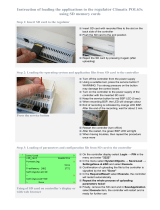
PowerQUICC MPC8306KIT User’s Guide, Rev. 0
2 Freescale Semiconductor
Required Reading
When you finish reading this document, you should:
• be familiar with the board layout
• understand the default board configuration and your board configuration option
• know how to get started and boot the board
• know about the software and further documentation that supports the board
1 Required Reading
Use this manual in conjunction with following documents:
• MPC8306 PowerQUICC II Pro Integrated Communications Processor Family Reference Manual
(MPC8306RM)
• MPC8306 PowerQUICC II Pro Processor Hardware Specifications (MPC8306EC)
• Hardware and Layout Design Considerations for DDR Memory Interfaces (AN2582)
NOTE
This equipment has been tested and found to comply with the limits for a
Class A digital device, pursuant to part 15 of the FCC rules. These limits are
designed to provide reasonable protection against harmful interference
when the equipment is operated in a commercial environment. This
equipment generates, uses, and can radiate radio frequency energy and, if
not installed and used in accordance with the instruction manual, may cause
harmful interference to radio communications. Operation of this equipment
in a residential area is likely to cause harmful interference in which case the
user will be required to correct the interference at his own expense.
2 Definitions, Acronyms, and Abbreviations
Table 1. Definitions, Acronyms, and Abbreviations
SOM System on module
PCB Printed circuit board
BSP Board support package
POR Power on reset
GPCM General-purpose chip-select machine
FCM Flash control machine
MDIO Management data Input/Output
COP Common on-chip processor
RCWLR Reset configuration word low register
RCWHR Reset configuration word high register
LTIB Linux target image builder
USB Universal serial bus





















